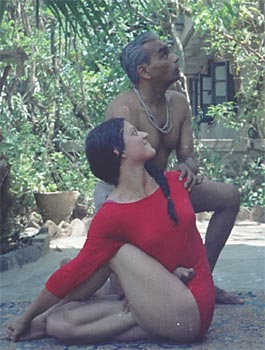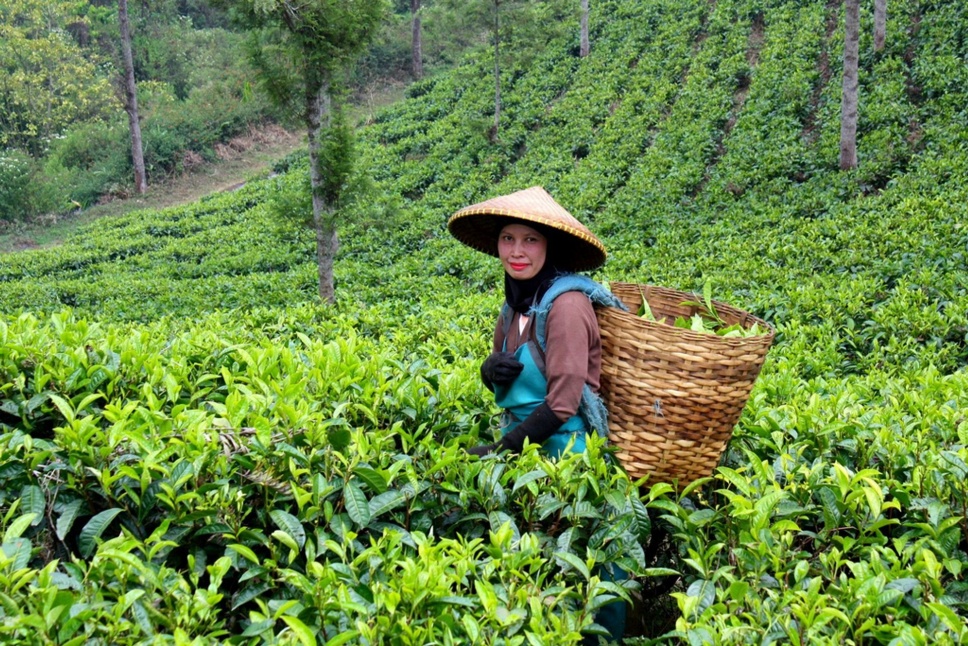DONA HOLLEMAN
Biography

Dona Holleman was born on the 23rd of February 1942 in Thailand in the middle of World War Two. The family spent six years in a Japanese concentration camp (talking about ‘lockdown’) where many people died, including Dona’s father, of tropical diseases. When the war was over, the remaining family moved to Holland where they lived for three years in the castle of a friend of her mother, who had given this castle initially to Jiddu Krishnamurti in the twenties, and afterwards to the Quakers, to make an international Quaker school.
The castle was surrounded by woods and Dona, at the age of four, spent many hours roaming the woods and fields by herself, observing nature. These solitary roamings left a deep impression on the young child of freedom and observation.
Dona’s love for nature and the woods was born there. As her mother was born and raised on a tea plantation on the island of Java, where she met her husband, Dona’s father, they moved back to the island. Living in Java again was for Dona an experience never to forget. They moved to Java in the middle of a fierce civil war, and her first impressions were of the military everywhere, cannons going bambambam at night, servants each time screaming that they were all going to die. Nevertheless Dona fell in love with the country, and has ever since considered Java her ‘real’ home. Afterwards, going back to Holland, she never adapted, and eventually left Holland forever. Looking back on her years in Java Dona’s deepest respect goes out to those heroic men and women who still managed to raise their children in the confusion of war and give them unforgettable memories. In all this confusion and war scenes Dona managed to go horse riding and do other sports and outings in the surrounding mountains, and have piano lessons and other ‘amusements’. After the revolution and civil war in Indonesia, just before the coup d’état of Sukarno in 1956, the family moved back to Holland, where Dona finished her classical schooling. During that time her mother started to do yoga with a local lady, and Dona, at the time 17 years old, accompanied her, immediately taking to yoga like a duck to water.
Her mother was also a follower of Jiddu Krishnamurti, one of the greatest thinkers of the twentieth century. Again Dona accompanied her to Gstaad, Switzerland, in 1961, to meet and talk with this great man.
After this she would go back each summer to the Saanen Talks and had several interviews with Krishnamurti. She also met Vanda Scaravelli there. It was also in the chalet in Saanen that she first came into contact with the ‘teachings of Don Juan’, as written down by Carlos Castaneda. Her curiosity drove her to buy the book, after which she seriously began to study these teachings. It was only much later that she realized that in reality Don Juan was talking about quantum physics, and its application in real life. She kept studying Castaneda parallel to yoga, and many of her spiritual concepts are the result of these studies.
Apart from the Krishnamurti talks there was also one, or maybe, the most famous violinist of the twentieth century, Yehudi Menuhin. At one point in his history Menuhun was unable to sleep and rest due to stress, so he went to India to look for someone who could help him. After many fruitless attempts to find a suitable yoga teacher he was almost tempted to leave India when someone told him about a young brahmin boy in Puna.
As a last resort he went to Puna to meet this young man, whose name was Bellur Krishnamacarya Iyengar who, within half an hour, put him to sleep. Menuhin was deeply impressed and invited Iyengar to Gstaad in the summer, where he held his famous Saanen concerts every year. As Krishnamurti had also started to practice yoga, they ‘shared’ Iyengar between them.
This is where Dona, age 22, 1964, met BKS. Iyengar in Vanda’s house in Gstaad, where both he and Krishnamurti stayed as Vanda’s guests, in one of her meetings with Krishnamurti.
As everyone was talking about this yoga teacher, and Dona had already decided that she wanted to be a yoga teacher, she asked Krishnamurti to kindly introduce her and her friends to the yoga teacher. They were a small group of sixties hippies camping on the river, and Iyengar was furious and probably disgusted by these ‘hippies’. As a sort of ‘revenge’ he made all six undress and taught them standing poses on the lawn of Chalet Tannegg in their underwear, with Krishnamurti hanging over the balcony, laughing.
It was then that Dona decided that this man was going to be her teacher. For those of you who were born after the wild sixties, as a heritage of the Beatniks EVERYONE in Europe went to India, Japan, China etc. in search of something, of enlightenment, of a guru, of meditation, of a monastery where to spend the rest of their lives, of satori. People went by boat, by bicycle, by bus, by train, by car, some even on foot, So too Dona arranged with Iyengar to meet him in Bombay, now renamed Mumbai, for a year of intense yoga practice. She went on a cargo boat from Marseille to Mumbai, third class, to spend one year living in the Salvation Army building in Mumbai, learning yoga.
There were four people in the class. Three Jains and Dona. Dona got the key of the school where Iyengar taught and went there every day to practice, three hours in the morning and three in the afternoon. The rest of the day she used to spend at the Bombay Club hobnobbing with the Irish jockeys and watching the horse races. Her love of horses had not diminished. Quite a combination!
In the meanwhile Iyengar taught her all the postures that he, in turn, had learned from his teacher Krishnamacarya.
In 1965 Dona returned to Holland where she founded the Dutch BKS.Iyengar Yoga Werkgroup.
There she taught from 1966 to 1969 a teacher training class, which included Victor van Kooten who later also became well-known as a yoga teacher, after Dona had encouraged him to, in his turn, travel to Puna to study. She also wrote her first book on yoga. Dona herself went back to India in 1969, this time to Puna, to spend another year with BKS Iyengar.
In 1970 she went to London at the age of 28 at the request of Iyengar, where he introduced her as his European Gita. She spent two years in London, teaching many people. Amongst those taught by Dona were Angela Farmer, Maxine Tobias, Mary Stewart and many others.
In 1972 Iyengar expressed his wish to visit Vanda Scaravelli in Roma, and so Dona offered to drive him from London to Rome in her VW van over the Alps. Some other people joined in and they had a fun time, doing yoga on the rocks, playing foot ball and visiting some mountains on the way.
In Roma they were joined by some people from Venetia and spent a week practicing yoga, using Vanda’s furniture as ‘props’.
When Iyengar left to go back to Puna, Dona stayed a couple of weeks in Roma to teach, after which Vanda encouraged her to go to Florence. In Florence word went around quickly that this student of BKS Iyengar was going to establish herself there, and in no time students turned up and found her a small studio in Via Ricasoli, the center of the city. That was in 1972.
Dona spent the next 15 years teaching in that studio in Florence, where she formed, apart from the regular classes, a small group of students, training them a couple of times a week free of charge to become teachers. Amongst these students trained by Dona were Gabriella Giubilaro, Emilia Pagani, Bianca Strens-Hatfield, Gabriela Corsico Piccolini, Emilia Pagani and others.
In 1980 Patricia Walden invited Dona to go to Boston, and that became the beginning of her annual trips to the States, which lasted twenty years, and where she taught many students who, in their turn, became well known teachers, amongst others Patricia Walden, John Schumacher, Erich Schiffman and many others.
She also taught for many years at Yoga Works in Los Angeles, and did several interviews for local tv stations .
In 1979 someone gave her a book called ‘The Thinking Body’, by Mabel Todd. This book was written in 1937, and produced a profound change of understanding yoga and the body in Dona. For the first time in her yoga practice she began to understand the importance of anatomy and the relationship with gravity, and more than anything else the discovery that the speed of learning of the patterns of movement of a skill precedes its practice in actual performance. It was a revolution, and out of this book came eventually the concept of the EIGHT VITAL PRINCIPLES OF PRACTCE, in which many of Mabel Todds idea were incorporated. Gravity, intent, hara came all out of this new understanding.
With Diana Eichner she made a movie called ‘A fish in search of water’, which earned a small reward in the New York amateur film festival. Dona’s philosophy is that it is as absurd for a fish to search for water, as he is completely submerged in it, as it is for the human being to search for God, for Life, as the human being is completely immersed in it, is an integral part of the Divine. All he needs to do is to be aware of it. (see insertion at the bottom).
In Hindu tradition this concept is called Advaita, Non-duality. Advaita Vedanta, which is the spiritual basis of yoga, will be discussed in another section of this web site. Shri Shankaracharya was the great acharya of this system of thought, and here we find the most famous quote of Advaita Vedanta: ‘Thou art that’ (‘Tat Tvam Asi’). Advaita means ‘non-duality’: Brahma is inherent in everything, IS everything. It is US , YOU, the trees and the stars.
In the nineties Dona disassociated herself from the Iyengar community as, in her opinion, it had become a cult. She herself continued to practice and teach the pure and original tradition which she had learned from B.K.S.Iyengar in the early years and to encourage her students to adhere to this too.
Gita and Dona had been his first students in Puna. With Gita’s death, and the death of Iyengar, Jiddu Krishnamurti, Vanda Scaravelli, and Radames Silvestri who, together with Dona, brought the teaching of BKS Iyengar to Italy, Dona is now the sole survivor of a time where yoga had still a meaning as a spiritual path free from material gains, in which the sadhaka’s first goal is the search for truth and liberation from samsara by living the millennial teachings of the great yogis of the past.

Read a personal blog by Dona Holleman!
LATEST
DEEP ROOTS AT HOME
Sent to me by a friend Dear Friends,This is perhaps one of the most important videos I have shared to date. It reveals even more than we...
See videos, photos and all Dona Holleman’s Book.

